In 2017, we visited Barcelona in the province of Catalonia, Spain. We had been wanting to visit or several years and after quite a bit of research, decided that the province of Catalonia would give us everything we wanted. Visiting, hiking and time spent in the Mediterranean. But most importantly, we wanted to visit Barcelona…
We got off the plane, hopped on a taxi and were promptly driven to the Hotel Suizo, right in the centre of Old Town and El Born. We got there quite early in the morning. The room wasn’t ready so we handed them our luggage and went out for a walk. This was probably the best hotel decision we could possibly have made staying in Barcelona. Totally centrally located and quite nice. We walked everywhere to everything we wanted to see, including Las Ramblas and the Barcelona Cathedral was five minutes away.
I was blown away with Barcelona. Literally, everything about the city was mind boggling to me.
I’m not really sure where to begin so let’s start with the obvious. Hotel Suizo is located in the Gothic Quarter of Barcelona, so called because it used to be a Roman village and has remnants of its glorious past. Barcelona‘s Gothic Quarter is without a doubt one of the most popular sightseeing areas in town. Its narrow streets and myriad historic buildings contribute to its enigmatic charm.
The Gothic Quarter begins at the Pla de la Seu. There, street magicians and human statues panhandle in front of the Barcelona Cathedral. The cathedral, a grand monument dating from the 13th to 15th centuries, is a top attraction in the Gothic Quarter. Its official name is the Cathedral of the Holy Cross and Saint Eulalia and it’s Neo-Gothic facade is stunning. However, it’s not ancient, having received facelifts in the 19th and 20th century. You can visit the church for free from 8:00 am to 12:45 pm and 5:45 pm to 7:30 pm. Otherwise, entry is by donation. Dress appropriately. It is a cathedral.
Inside, the cathedral has a wide central nave and two side aisles, separated by colonnades. The cathedral has 28 richly decorated chapels, an ornately carved choir and a peaceful cloister with bubbling fountains. Behind the high altar is the Bishop’s chair. You’ll also find the crypt of Saint Eulalia, the patron saint to whom the cathedral is dedicated. We found it over the top but fascinating.
The cloisters are the highlight. Arcaded walkways surround a central courtyard filled with tropical trees. A short elevator ride takes you to the top of the cathedral for stunning city views. For the best view of cathedral itself, take the elevator to the rooftop of the next door Hotel Colon.
It’s gaudy but pretty incredible.
The Bishop’s Bridge. This might be the most famous spot in the Gothic Quarter. It was just a few minutes from our hotel and we walked under it several time. It isn’t technically a bridge. It’s a covered gallery connecting the Government Palace and the Canon’s House and the Neo-Gothic bridge itself isn’t terribly old, though it blends in well with its frilly stonework and gargoyles.
It was built in 1928 for the Barcelona International Exposition by architect Joan Rubio i Bellver. He aimed to build a series of similar bridges, but his project was nixed by the government. A bit pissed off, he incorporated a hidden skull with a dagger on the bridge’s underside, which has generated myths. One legend holds that if you make a wish when you pass under the bridge, while looking at the skull at its base, your wish will come true. Another holds that, if you see the skull, you’ll fall pray to an evil spell.
Immediately past the bridge is a facade with the Statue of Saint Jordi. It was carved by Pere Johan in the 15th century. Jordi was a legendary Catalonian knight who valiantly rescued a princess from a dragon. When Jordi slew the dragon, a rose bush grew. Jordi gifted his love a rose. Now, on April 23, lovers celebrate St. Jordi’s day with an exchange of a rose or gift.
Every alley way had history. Every building had a story…
Museum of the History of Barcelona. In an unassuming building for the Gothic Quarter, you’ll find the delightful Museum of the History of Barcelona. The museum is Barcelona’s principal Roman themed museum and shares space with the former Royal Palace. It’s believed to stand in a medieval courtyard once used by King Ferdinand and Queen Isabella to celebrate the return of Christopher Columbus. Grab the essential audio guide and get ready for a listen. There are also English handouts.
We spent hours in here and had to be asked to leave…
It’s best to start with a short introductory video in the theatre. In the basement level, the museum really comes to life. Down a special elevator, you’ll come to what seems like a mysterious underground labyrinth. There, you’ll find Roman ruins dating from the time of Emperor Augustus — wall fragments, pavements, Roman baths, an ancient sewage system and wine vats.
This is worth a visit.
Casa Batlló is one of the two great buildings designed by Antoni Gaudí on Passeig de Gràcia. From the outside the façade of Casa Batlló looks like it has been made from skulls and bones. The “Skulls” are in fact balconies and the “bones” are supporting pillars.
Gaudí used colours and shapes found in marine life as inspiration for his creativity in this building. For example, the colours chosen for the façade are those found in natural coral. The building was designed by Gaudí for Josep Batlló, a wealthy aristocrat, as an upmarket home. Señor Batlló lived in the lower two floors with his family and the upper floors were rented out as apartments.
This building is a stunningly original work and well worth the visit. If you decide to take a look around inside you will learn how much attention to detail Gaudí spent on his designs thinking about such things as varying window size depending on how high the window is from the top of the building. In this way, he could ensure uniform lighting conditions in each room of the house. The audio tour that comes with the entrance ticket gives you fascinating insights into Gaudí and his influences when designing this house.
La Sagrada Família is Gaudí’s most famous work in Barcelona. It’s a giant Basilica that has been under construction since 1882 and it’s not expected to be completed for some time yet. The Temple is considered to be the symbol of Barcelona by many residents, and the one place you shouldn’t miss when you visit the Catalan capital. Initially intended to be a simple Roman Catholic church dedicated to Jesus, Mary and Joseph, the church ultimately became the most prominent example of Catalan Modernism. Pope Benedict XVI declared it a basilica in 2010.
Dreamed up by Catalan architect Antoni Gaudí, the basilica exemplifies Gaudí’s philosophy that nature is the work of God. Gaudí sought to combine Christian speech and biblical allegories with complex natural symbols like organic, geometric shapes which are prominent in every column, pinnacle and stained glass window of the basilica.
The end result is an astounding architectural masterpiece which, despite being unfinished and under construction for nearly 140 years, has become one of the most visited monuments in Spain, receiving 4.7 million visitors in 2019.
In 1891, when development of the Nativity facade began, Gaudí realized that the construction of the Sagrada Família was such an ambitious project that he certainly would not see its completion in his lifetime. In fear of the project being stopped after his death and once the church acquired its worship function, Gaudí decided that, instead of building the central nave, he would start on the external part of the church.
At the time, Gaudí was also working on Casa Milà and when that was completed in 1912, he focused exclusively on the construction of the Sagrada Família. He worked on it until he died in 1926 and was buried inside the crypt. After Gaudi’s death, Domènec Sugrañes i Gras assumed the main role of architect. Work resumed in 1954 and it’s been under construction ever since.
It’s an unbelievable place to visit so suspend your belief and just enjoy. It’s overwhelming in many ways…
Flamenco. This was my first experience with Flamenco , so I don’t have anything to compare it to, but it was amazing. The dancers and the musicians were superb, they had so much passion and energy was incredible. It helped that the building itself is beautiful and full of history.
We stumbled across this by accident while walking in the Old Town and the setting was very Bohemian and we loved it. We loved it so much that we attended a second Flamenco performance when we came back to Barcelona after our visit north.
Park Güell. Visitors and locals alike love Park Güell. The waving balcony and the colourful Guard’s House, with the imposing Barcelona skyline and sea in the background, is the city’s favourite postcard. It’s also a great summary of what the Catalan capital is like: a creative, cosmopolitan city with a Mediterranean lifestyle.
We decided to walk here and it was quite the walk but well worth is as we passed through sections of town we ad not yet seen. Barcelona is a big city and we only spent five days in total here so we only skimmed the surface.
Antoni Gaudí created Park Güell, an architectural masterpiece, with tree-shaped columns and undulating forms that merge in perfect harmony. You can see Yim standing underneat and between these in the photo above. The colours of the broken tile mosaics that cover the surface of the distinct elements is an unprecedented technique of Gaudí that makes the astonishing shapes come to life. It was also built in the middle of the city atop a hill, hence it is blessed with some of the best views in Barcelona.
Park Güell is one of the outstanding examples of Catalan Modernism and an unmissable destination for anyone visiting Barcelona.
Catalonia’s fight for Independence. We inadvertently arrived in Barceloina on their independence Day, so for the entire time we were in the city, there were peaceful demonstrations surrounding us… and Yim managed to snap this photo of me on front of a Catalan Flag.



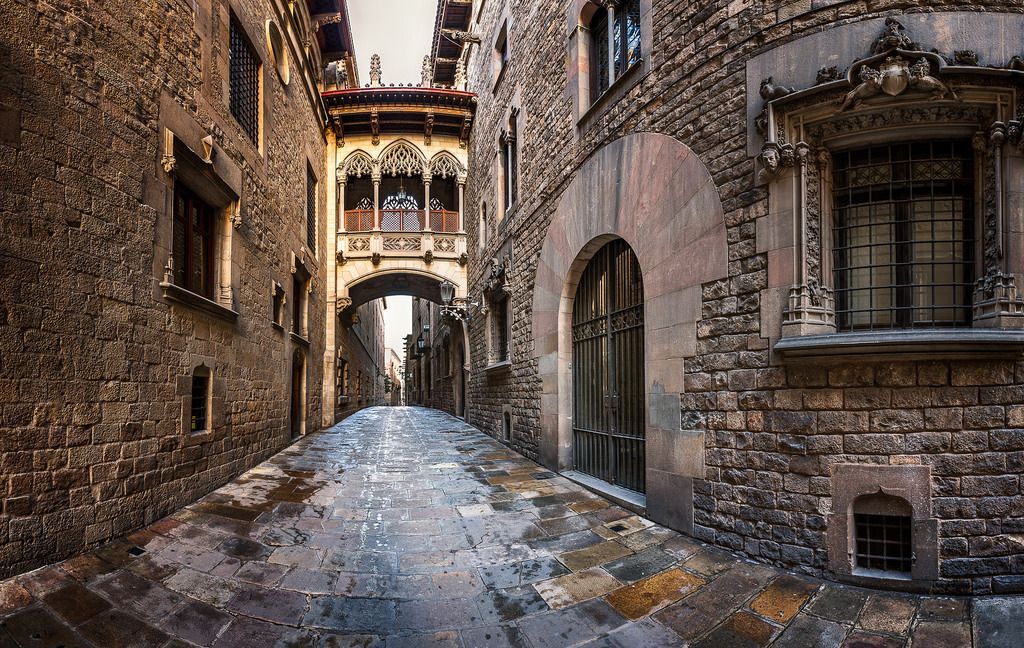

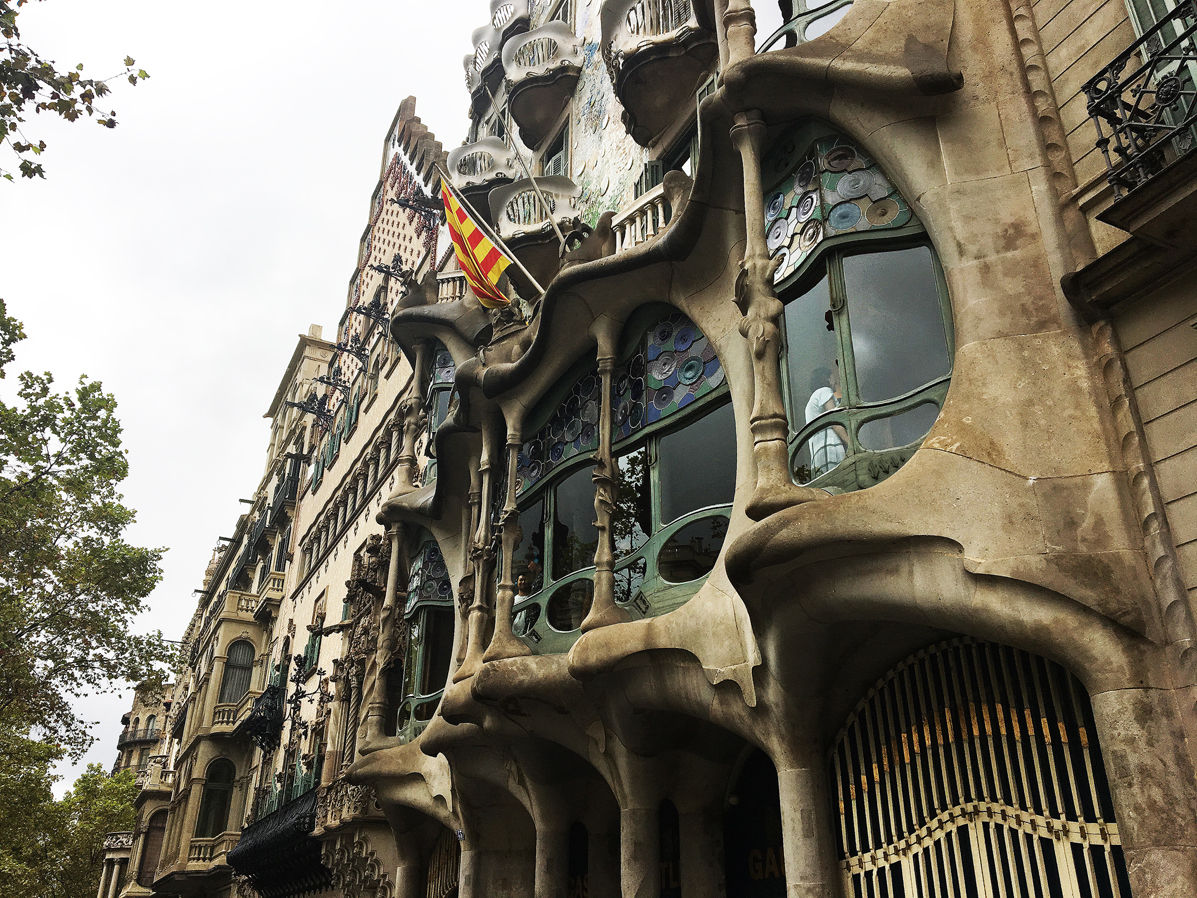




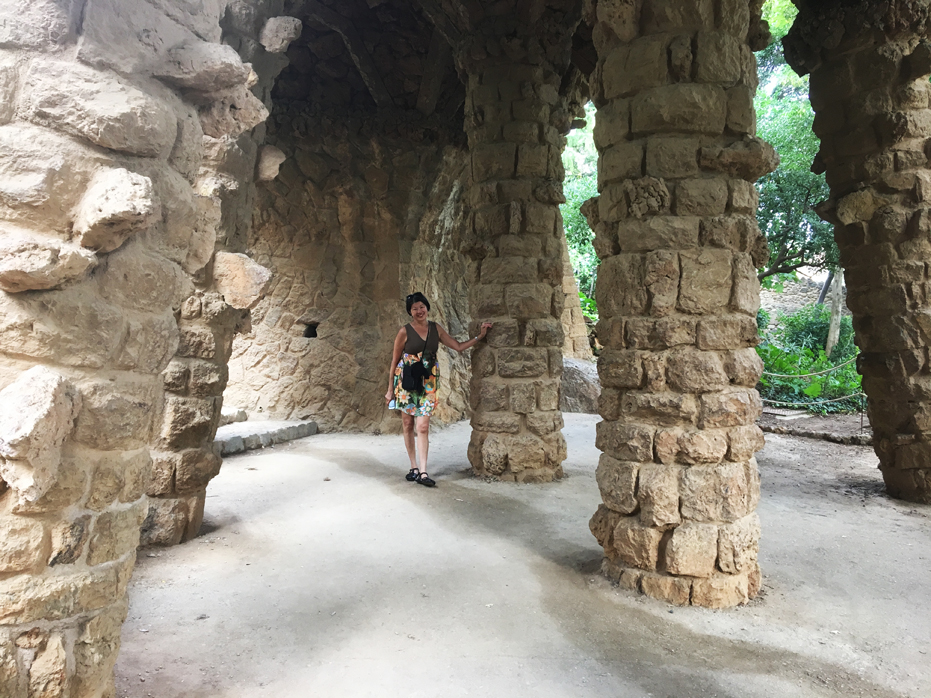
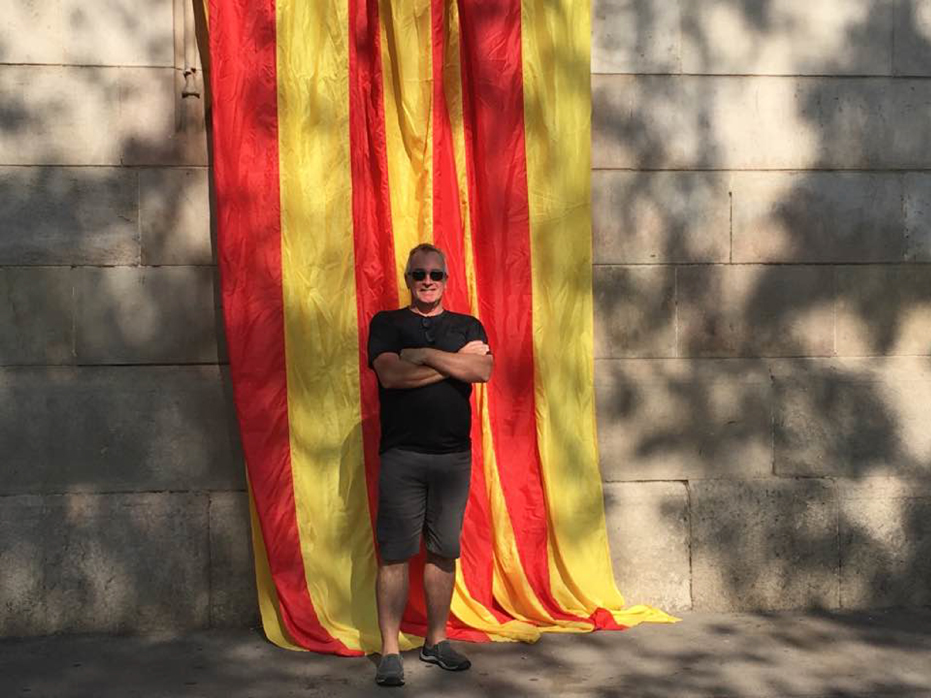

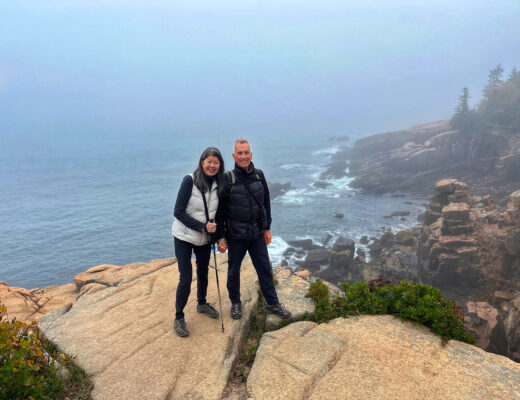
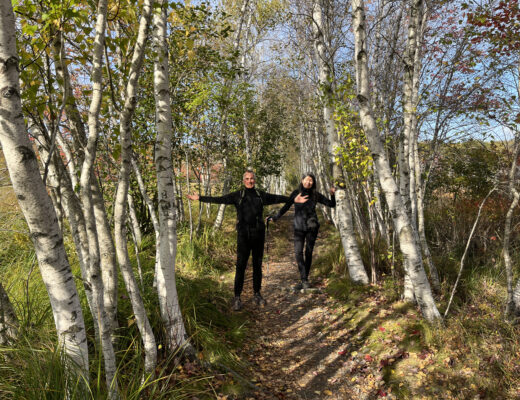

No Comments